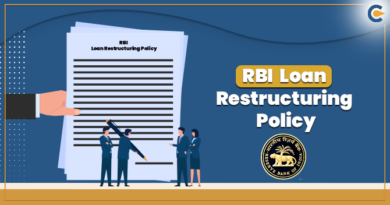Hidden Bank Charges Draining Your Money – How to Identify & Avoid Them
Table of Contents
Introduction
In today’s fast-paced world, most of us rely heavily on banks for managing our money. Whether it’s for savings, salary deposits, bill payments, or online transactions, banks play a crucial role in our daily financial lives. We trust that our money is safe and our banking experience is smooth. However, what many people don’t realise is that while we focus on earning and saving money, some part of it quietly slips away – in the form of hidden bank charges.
These charges are often small and seem insignificant at first glance – maybe just ₹10 or ₹50 at a time. But over time, they add up. You may not notice these deductions until you see your balance lower than expected or until a penalty is suddenly charged for something you weren’t even aware of.
The surprising part? Most of these charges are avoidable – if you know where to look and how to manage your account smartly. Unfortunately, banks don’t always highlight these charges upfront. They’re often buried in the fine print of terms and conditions, or mentioned in lengthy documents that many customers skip reading.
In this blog post, we will uncover the hidden charges that banks in India commonly levy, explain how they impact your savings, and – most importantly – guide you on how to avoid them. A few smart changes in how you handle your bank account can save you hundreds, or even thousands of rupees, every year.
What Are Hidden Bank Charges?
Hidden bank charges are fees that banks deduct from your account without giving a clear or prominent notification at the time. These charges are often not well communicated to customers and are usually mentioned in the fine print of account terms and conditions. While they are technically “disclosed” by the bank, most customers are either unaware of them or don’t understand when and how they are applied.
These charges don’t come with an alert or a warning. Instead, they silently reduce your bank balance, month after month or transaction after transaction. You might not notice them until you check your passbook, bank statement, or receive a message saying money has been deducted for a “service” you didn’t even know existed.
Why Are They Called “Hidden”?
Lack of transparency: Banks often fail to proactively inform customers about changes in charges or newly introduced fees.
Complex terms: Information about these charges is buried in detailed documents filled with banking jargon that most people don’t read or fully understand.
Automatic deduction: These fees are directly debited from your account without prior consent or reminders, making them easy to miss.
Example: You withdraw money from an ATM more than 5 times a month. Without knowing it, you’re charged ₹20 + GST for every extra withdrawal. Or perhaps you didn’t maintain the required monthly average balance, and your bank silently deducted ₹250 as a penalty. These are just a few examples of how banks impose fees that many people don’t even realize they’re paying.
The good news? Once you know where these charges come from, you can take steps to avoid them completely. In the next section, we’ll go over the most common hidden bank charges that are draining your money every month.
Common Hidden Bank Charges in India

Indian banks, both public and private, apply a range of charges that many account holders are not fully aware of. These charges are often deducted silently and can have a significant cumulative impact on your savings over time. Below are the most common hidden bank charges you should be aware of:
a. Minimum Balance Penalty
Most savings and current accounts require you to maintain a monthly or quarterly average balance (MAB/QAB). If your balance falls below the required limit, banks impose a penalty ranging from ₹150 to ₹600, depending on the shortfall and account type.
Example: If your bank requires a ₹10,000 monthly average balance and you only maintain ₹5,000, you could be penalised ₹250 or more.
Avoid it: Opt for a Basic Savings Bank Deposit Account (BSBDA) or keep track of your average balance through mobile banking.
b. ATM Withdrawal Charges
Banks allow a limited number of free ATM withdrawals per month: 5 free transactions from your own bank’s ATM, 3 free transactions from other banks’ ATMs (in metro cities), After this limit, banks charge ₹20–25 per withdrawal, including balance checks.
Avoid it: Use UPI or digital payments where possible. Consolidate your cash withdrawals.
c. SMS Alert Charges
Many banks charge ₹10 to ₹25 per quarter for SMS alerts related to transactions. Though this seems small, it’s an annual cost deducted automatically.
Avoid it: Some banks allow you to opt out of non-essential alerts. Use mobile banking apps to monitor transactions instead.
d. Cheque Bounce Charges
If a cheque you issue bounces due to insufficient balance, banks charge ₹150 to ₹750 or more. The payee’s bank may also charge them.
Avoid it: Ensure sufficient balance before issuing cheques. Use auto-debit mandates only if you’re sure of funds.
e. Cash Deposit & Withdrawal Charges
Banks may offer free cash deposits and withdrawals only up to a limit per month. Exceeding that attracts charges like ₹2.50 to ₹5 per ₹1,000 transacted.
Avoid it: Try to do fewer, larger transactions. Prefer digital methods for transfers.
f. Debit Card Annual Charges
Banks charge annual maintenance fees on debit cards, typically ranging from ₹150 to ₹300 per year, depending on the card type.
Avoid it: If you don’t use the card often, consider requesting a downgrade to a basic card or account type.
g. NEFT, RTGS, and IMPS Charges
Though many banks now offer free NEFT/RTGS/IMPS through online banking, some still charge for branch-based transactions or if a certain number of free transactions are exceeded.
Avoid it: Use online or mobile banking for NEFT/IMPS. Avoid branch-based fund transfers unless necessary.
h. Dormant Account Charges
If your account remains inactive for more than 2 years (no deposits or withdrawals), it may be marked dormant. Some banks charge a fee to reactivate it.
Avoid it: Use the account at least once a year or close unused accounts.
i. Account Closure Charges
Closing an account within 6–12 months of opening can attract charges ranging from ₹150 to ₹500.
Avoid it: Keep the account open for the minimum period or confirm bank policies before account opening.
These charges may seem minor in isolation, but can add up significantly over the year. In the next section, we’ll discuss how you can identify and track these charges more effectively.
How to Identify Hidden Charges
Most customers don’t notice hidden bank charges until they see unexpected deductions in their balance. The good news is, you can easily identify and track these charges if you adopt a few simple habits. Here’s how:
a. Read the Schedule of Charges (SOC)
Every bank publishes a document called the Schedule of Charges, listing all fees for different banking services. It includes charges for:
- ATM usage
- Fund transfers
- Cheque books
- Account maintenance
- Loan processing, etc.
Where to find it:
Visit your bank’s website or ask at the branch. It’s usually available as a downloadable PDF.
Tip: Bookmark your bank’s SOC page and check for updates every 6–12 months.
b. Monitor Your Bank Statements Regularly
Your monthly bank statement (email/PDF or passbook) shows every debit and credit, including service charges. Look for entries like:
- “ATM TXN FEE”
- “MIN BAL PENALTY”
- “SMS ALERT CHG”
- “DEBIT CARD FEE”
Tip: Review your statement once a month and mark any unfamiliar charges.
c. Use Mobile or Net Banking for Transaction Alerts
Bank apps show real-time updates of all charges and deductions. Some apps even provide categorised expense reports, including fees.
Benefits: Instant visibility of deductions, Easier to match charges with activity
d. Ask Questions at the Bank
Don’t hesitate to ask your branch staff or customer care about any charge you don’t understand.
It’s your right to know:
- Why it was charged
- How often it will be charged
- How to avoid it in the future
e. Check for Changes in Terms & Conditions
Banks sometimes change their fee structures. You may receive a notification by email or SMS – don’t ignore it.
Even if it’s a long document, scan for headings like:
- “Charges Revision”
- “Fee Updates”
- “Minimum Balance Change”
f. Set Email/SMS Alerts for All Transactions
Make sure your bank has your updated contact information and that transaction alerts are turned on. These alerts help you instantly detect any unusual or hidden charges. By actively tracking these sources of information, you can identify hidden bank charges early and take the necessary steps to avoid them. In the next section, we’ll explain practical ways to stop these charges from draining your money.
How to Avoid These Charges
Now that you know which charges banks commonly apply and how to identify them, the next step is even more important – avoiding them altogether. Most hidden bank charges are preventable with a few smart habits and informed choices.
Here are practical ways to protect your money:
a. Maintain Required Minimum Balance:
- Know your account’s Monthly Average Balance (MAB) requirement and try to maintain it.
- If you can’t, switch to a Basic Savings Bank Deposit Account (BSBDA) – it has no minimum balance requirement and no penalty.
Tip: Set a reminder to check your average balance weekly using mobile banking.
b. Use UPI/Digital Payments Instead of ATM Withdrawals
- Avoid extra ATM usage fees by using UPI apps like BHIM, Google Pay, PhonePe, etc.
- For cash needs, withdraw larger amounts fewer times rather than multiple small withdrawals.
c. Opt for E-statements & App Notifications Instead of SMS Alerts
- Some banks allow you to disable paid SMS alerts while keeping free app notifications.
- If you rarely rely on SMS alerts, consider turning them off.
d. Avoid Cheque Bounces
- Always keep track of issued cheques or ECS mandates.
- Set calendar alerts or reminders for auto-debit dates (loans, EMIs, credit cards).
Tip: Use mobile apps to set low-balance alerts.
e. Stay Within Free Limits for Cash Transactions
- Many banks allow 3 to 5 free cash deposits or withdrawals per month.
- Plan transactions smartly – deposit or withdraw in fewer, larger amounts.
f. Review Your Debit/Credit Card Charges
- Check if your debit card is being charged an annual fee.
- If you rarely use the card, request a downgrade or switch to a no-frills variant.
g. Use Online Transfers Over Branch Transactions
- Digital NEFT/IMPS/RTGS transactions are often free.
- Branch transactions may attract charges even for the same services.
h. Keep Accounts Active or Close Them Timely
- If you don’t use an account, it may become dormant and attract reactivation charges.
- Either use it at least once a year or close it after transferring funds.
i. Ask for Waivers or Negotiate with Your Bank
Some banks may waive charges if you request politely, especially if you are a long-term or high-balance customer.
j. Stay Informed
- Visit your bank’s website every few months to check for updates in fees and policies.
- Subscribe to your bank’s official communication channels for alerts and changes.
Being alert and proactive is the best way to avoid losing money to unnecessary bank charges. In the next section, we’ll look at what regulations the RBI has set in place to protect customers like you.
Government and RBI Rules for Consumer Protection
The Reserve Bank of India (RBI) and the Government of India have laid down several rules and guidelines to ensure that banks deal fairly with their customers. These regulations aim to improve transparency, protect consumer rights, and prevent banks from levying unfair or hidden charges
Here are the key protections available to you as a bank customer:
a. Transparency in Bank Charges
- RBI mandates that all scheduled commercial banks must:
- Display their Schedule of Charges (SOC) on their official websites and branches.
- Inform customers in advance before any increase in charges or introduction of new charges.
- Provide details of applicable charges at the time of account opening.
- RBI Guideline: Circular on “Reasonableness of Bank Charges” (2006) – banks must ensure charges are reasonable and based on cost.
b. Right to Grievance Redressal
- If you feel you have been wrongly charged or not informed:
- You can file a written complaint to your bank’s branch manager.
- If not resolved within 30 days, you can escalate to the RBI’s Integrated Ombudsman Scheme.
- How to file: Visit the Complaint Management System to file a complaint online directly with the RBI.
c. Basic Savings Bank Deposit Account (BSBDA)
RBI introduced BSBDA to ensure that every Indian has access to basic banking services without worrying about hidden fees.
Features of BSBDA:
- No minimum balance requirement
- No charges for basic ATM withdrawals and deposits
- No charges for 4 basic withdrawals per month
- Eligibility: Any Indian citizen can open a BSBDA in any bank.
d. RBI Mandate on Dormant Accounts
- Banks must inform customers 3 months before declaring an account dormant and explain how to reactivate it.
- Reactivation charges should be reasonable and must be disclosed in advance.
e. Regulation on ATM Charges
- RBI has set clear limits on ATM usage:
- 5 free transactions per month at your bank’s ATMs (including non-financial)
- 3 free at other bank ATMs in metro cities; 5 in non-metro cities
- Any charges beyond this must be informed transparently
f. Regulation on Loan-Related Charges
- RBI has directed banks and NBFCs to:
- Provide a complete breakup of processing fees, prepayment penalties, and foreclosure charges.
- Avoid hidden charges and disclose all costs in the Key Fact Statement (KFS) given to borrowers.
Smart Banking Tips to Avoid Hidden Charges
Being smart about how you use your bank account can help you avoid unnecessary charges and keep more money in your pocket. Here are some practical tips to practice smart banking:
a. Choose the Right Bank Account
Select accounts that suit your needs, such as zero balance savings accounts or Basic Savings Bank Deposit Accounts (BSBDA) which have minimal or no hidden fees. Avoid accounts with high minimum balance requirements if you can’t maintain them regularly.
b. Use Digital Banking Efficiently
Use mobile apps and internet banking for transactions – these are often free or have lower charges. Set up auto-pay for regular bills and loan EMIs to avoid cheque bounce or late payment fees.
c. Monitor Your Accounts Regularly
Check your balance, transactions, and statements frequently to catch any hidden charges early. Use bank alerts and notifications to stay updated on every debit or credit.
d. Consolidate Transactions
Avoid frequent small ATM withdrawals or cash deposits that can add up in charges. Plan and consolidate your transactions to stay within free limits.
e. Keep Your Contact Details Updated
Ensure your bank has your current phone number and email so you receive important updates and alerts about charges or policy changes.
f. Opt Out of Unnecessary Services
Decline optional services that come with fees, such as SMS alerts (if you use app notifications), cheque books you don’t need, or premium cards.
g. Negotiate Fees When Possible
If you are a long-term customer or maintain a good balance, request waivers or discounts on certain fees.
h. Educate Yourself About Banking Terms
Understand key terms like MAB, cheque bounce, NEFT charges, etc., so you know what to expect and avoid surprises.
i. Use Multiple Banks Wisely
Consider maintaining accounts in different banks if it helps you benefit from their free services and limits. Smart banking is not just about saving money but also about using financial services wisely to avoid unnecessary costs and hassles.
Key takeaways:
Always read and understand your bank’s Schedule of Charges before opening an account. Maintain the required minimum balance or switch to zero-balance accounts if needed. Use digital payments and online banking to reduce ATM withdrawals and branch transactions. Regularly monitor your bank statements and transaction alerts to spot unexpected fees early. Don’t hesitate to ask your bank about any unclear charges and request fee waivers if applicable. Stay updated on RBI regulations and consumer rights to ensure banks follow fair practices. Practice smart banking by choosing the right account, consolidating transactions, and opting out of unnecessary services. If wrongly charged, file complaints promptly through your bank and escalate to the RBI Ombudsman if needed.
By taking these steps, you can keep more money in your pocket and build a healthier financial future. Remember, being informed and proactive is your best defence against hidden bank charges.
FAQ on Hidden Bank Charges
1. What are hidden bank charges?
Hidden bank charges are fees levied by banks that aren’t prominently disclosed or are buried in terms and conditions. These can include penalties for not maintaining minimum balances, ATM withdrawal fees beyond free limits, SMS alert charges, and more
2. How can I avoid hidden charges in my bank account?
3. What is the penalty for not maintaining a minimum balance?
4. Are SMS alert charges mandatory?
5. How many free ATM withdrawals are allowed per month?
Generally, banks offer:
5 free transactions at other bank ATMs in non-metro cities.
Beyond these, charges of ₹20–₹25 per transaction may apply.
5 free transactions at their own ATMs.
3 free transactions at other bank ATMs in metro cities.
6. What are cheque bounce charges?
7. Do banks charge for online fund transfers?
Many banks offer free NEFT, RTGS, and IMPS transfers through online banking. However, branch-based transactions or exceeding certain limits might attract fees.
8. What is an account maintenance fee?
9. Are there charges for dormant accounts?
Yes. If an account remains inactive (no deposits or withdrawals) for over two years, it may be classified as dormant. Reactivation might involve fees, and banks are required to inform customers three months prior to marking an account dormant.
10. How can I check if my bank is charging hidden fees?
Regularly review your bank statements.
Access the bank’s Schedule of Charges on their official website.
Set up transaction alerts via SMS or email.
Consult with bank representatives for clarifications.




